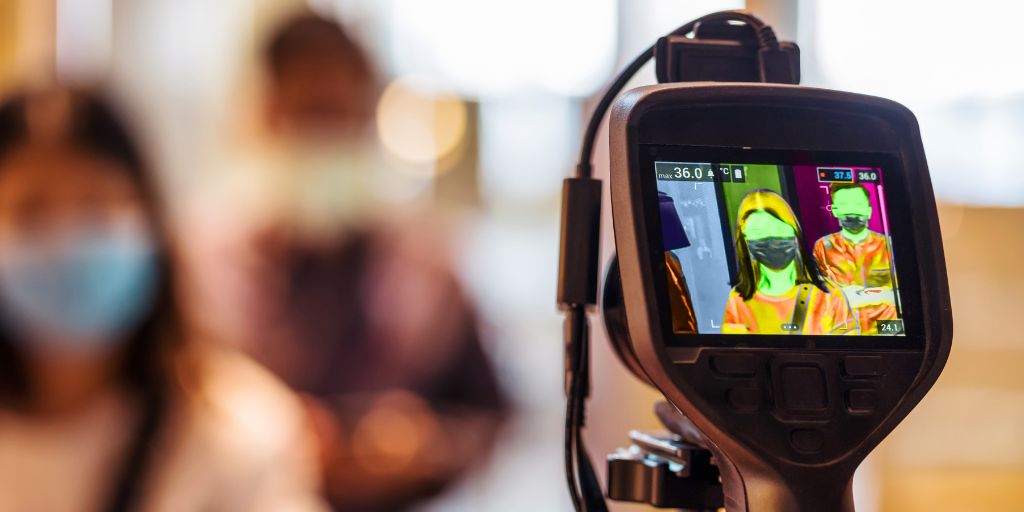
Healthcare in the UK stands on the brink of a transformative era. The new government’s vision is to use technology to make healthcare more predictive and preventative, and also more accessible. Thermal imaging has an essential part to play in realising this vision.
How can thermal imaging transform healthcare?
Advanced thermal imaging applications represent a significant leap forward in healthcare. This is especially true in the context of diabetic foot care, in which emerging AI-driven remote patient monitoring applications use high-frequency temperature readings to predict and prevent diabetic foot ulcers (DFUs), which are a leading cause of amputations.
These core technologies allow for early detection of temperature rises in the feet, which is a well-established predictor of DFUs. By providing up to several weeks of early warning before symptoms appear, thermal imaging-based applications enable timely interventions that can prevent ulcers from developing. This proactive approach aligns perfectly with the new government’s objective to not only treat but to prevent illness, thereby reducing the burden on the NHS.
Thermal imaging applications also support home-based monitoring and empowers patients by giving them the means to manage their own health proactively. This capability addresses the government’s stated aim to make healthcare as “accessible and immediate as ordering a takeaway”. By integrating with electronic medical records and providing clinicians with real-time data, these applications ensure that patients receive prompt, effective care.
This approach also reduces health inequalities, which are a significant concern in the UK: economically deprived populations experience higher rates of amputations – almost double the rates. Thermal imaging will help to deliver precise, cost-effective, and accessible care that can bridge this gap, providing high-risk patients, regardless of socioeconomic status, with the same level of preventative care.
Cost-savings and efficiency for the NHS
The economic implications of emerging thermal imaging applications for the NHS are profound. Diabetic foot ulcers currently cost the NHS approx. £1.5 billion annually – that’s almost one percent of the entire NHS budget.
Thermal imaging offers a compelling solution to this financial strain with significant cost savings plus improved patient outcomes in a variety of ways:
- Substantial cost savings – According to a budget impact analysis by Health Tech Enterprise, the widespread adoption of thermal imaging technologies could lead to a potential net saving of over £200 million p.a. for the NHS within five years. This is achieved through the prevention of thousands of amputations and foot ulcers, and the associated long-term healthcare costs.
- Enhancing efficiency – By reducing the incidence of DFUs, thermal imaging will not only save money but also free up NHS resources, allowing them to be redirected to other critical areas. This efficiency gain is in line with the government’s goal of streamlining healthcare delivery through technological innovation.
- Supporting groundbreaking treatments and innovations – The new government’s vision for the NHS includes embracing new technologies to deliver groundbreaking treatments. The latest thermal imaging applications fit squarely within this framework by offering a novel, AI-driven approach to one of the most challenging complication of diabetes.
The integration of AI and Machine Learning means that thermal imaging applications can continuously improve their diagnostic accuracy, which aligns with the government’s emphasis on using technology to enhance the quality and precision of healthcare.
These technology solutions are not only effective but also scalable. And they need to be: according to data from the charity Diabetes UK, 4.4 million people in the UK currently live with diabetes – although this number could be as high as 5.6 million. Of these, approx. 1 million people are at high risk of DFUs and need daily screenings for tell-tale early signs of foot ulcers. AI-enabled thermal imaging applications and platforms can be rolled out at scale to ensure that the NHS meets this essential need, now and in the future, without compromising on quality or accessibility.
A strategic fit for the future of the NHS
Integrating thermal imaging into the NHS represents a significant step forward in the government’s goal of harnessing the power of life sciences and technology to revolutionise healthcare. With its potential for substantial cost savings, improved patient outcomes, and alignment with the government’s preventative health strategies, these technologies are well-positioned to play a role in the NHS’s future. Thermal imaging also has potential roles in alleviating the burden of not only DFUs but also pressure ulcers and in wound care.
The government’s ambitious healthcare objectives and its commitment to embracing new technologies are a unique opportunity to embrace thermal imaging capabilities. In this way, it can ensure that the NHS remains at the forefront of healthcare innovation and delivers world-class care to every citizen.












